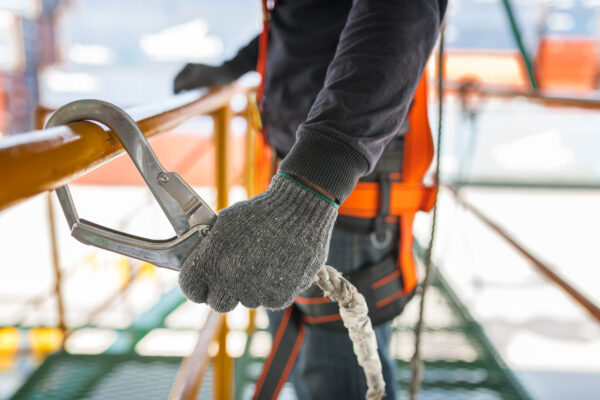In the bustling industrial landscape of Texas, workplace safety should remain a top priority for employers and employees alike. The potential hazards in various industries call for rigorous safety measures to prevent accidents and ensure a secure working environment. Safety training plays a pivotal role in mitigating the risks associated with industrial operations, leading to reduced accidents and injuries. This article explores the significance of safety training in Texas and the key requirements employers must adhere to in order to create a safer work environment.
The Importance of Safety Training in Texas
Texas is renowned for its diverse and booming industrial sectors, ranging from oil and gas to construction and manufacturing. While these industries contribute significantly to the state’s economy, they also pose inherent risks to workers’ safety. Accidents in such workplaces can result in serious injuries, fatalities, property damage, and costly legal repercussions. To combat these risks effectively, employers must invest in comprehensive safety training programs for their employees.
Preventing Workplace Accidents
Safety training equips workers with the knowledge and skills to identify potential hazards and understand the necessary precautions to avoid accidents. Whether it’s operating heavy machinery, working with hazardous materials, or navigating confined spaces, adequate training reduces the likelihood of incidents occurring.
Creating a Safety-Conscious Culture
By instilling safety practices through training, companies can cultivate a safety-conscious culture where employees actively prioritize their well-being and that of their colleagues. When safety becomes an integral part of an organization’s values, accidents are less likely to happen.
Complying with Legal Regulations
In Texas, like in many other states, there are strict regulations regarding workplace safety. Employers must comply with the guidelines set forth by the Occupational Safety and Health Administration (OSHA) and other relevant authorities. Failure to meet these standards can lead to fines and legal consequences. Proper safety training ensures compliance and helps businesses avoid costly penalties.
Safety Training Requirements in Texas
Texas law outlines specific requirements for safety training in different industries. Employers must adhere to these regulations to maintain a safe work environment and avoid legal complications.
OSHA Compliance Training
OSHA mandates training on various topics, including hazard communication, lockout/tagout procedures, fall protection, and more. Employers should ensure that employees receive OSHA-compliant training relevant to their job roles.
Emergency Response Training
Texas employers must provide training on emergency response procedures, such as fire safety, evacuation protocols, and first aid. This knowledge empowers employees to respond effectively in crisis situations, potentially saving lives.
Hazard-Specific Training
Certain industries carry unique risks, necessitating specialized training. For instance, employees working in the oil and gas sector may require training on dealing with flammable substances, while construction workers may need instruction on handling heavy equipment safely.
Refresher Training
Safety training is not a one-time event; it requires regular reinforcement. Employers should conduct periodic refresher courses to update employees on new safety practices and reinforce existing ones.
Promoting a Safer Future
As Texas continues to thrive with its robust industrial landscape, it is crucial for employers to take proactive measures to promote a safer future. In addition to complying with safety training requirements, here are some additional steps employers can take to enhance workplace safety:
Risk Assessments: Conduct regular risk assessments to identify potential hazards and implement measures to mitigate them. Understanding the unique risks in each work environment enables tailored safety training and safety protocols.
Safety Equipment: Provide employees with proper safety equipment and ensure they understand how to use it correctly. From personal protective equipment (PPE) to safety harnesses, having the right gear can significantly reduce the severity of accidents.
Reporting and Investigation: Establish a clear process for reporting near-misses and accidents. Investigate the root causes of incidents to prevent similar incidents in the future. An open reporting culture encourages employees to speak up about potential safety concerns.
Engage Employees: Involve employees in safety planning and decision-making. Engaged employees are more likely to follow safety procedures and actively contribute to identifying safety improvements.
Safety Committees: Form safety committees comprising representatives from different departments. These committees can discuss safety concerns, provide feedback, and suggest improvements to the safety program.
Training for Supervisors: Ensure that supervisors and managers undergo specialized safety training to effectively enforce safety protocols and promote a culture of safety within their teams.
Incentives and Recognition: Recognize and reward employees who actively contribute to maintaining a safe workplace. Positive reinforcement encourages employees to be vigilant and proactive in safety matters.
Continuous Improvement: Safety training and protocols should evolve as technology and work practices change. Regularly review and update safety measures to keep them relevant and effective.
At Chavez Law Firm, we understand the paramount importance of workplace safety in Texas industries. Our team of experienced attorneys is dedicated to helping businesses navigate the legal complexities of safety compliance and industrial accidents. If you or your organization require legal guidance or representation in matters related to workplace safety, don’t hesitate to reach out to us. Together, we can build a safer work environment for all Texans.
Safety training is the cornerstone of reducing industrial accidents in Texas. By investing in comprehensive training programs and adhering to state regulations, employers can create a safer working environment that protects the well-being of their workforce. Ensuring safety in the workplace not only prevents accidents and injuries but also fosters a culture of responsibility and care. Through continuous efforts and commitment to safety, Texas industries can flourish while safeguarding their most valuable asset – their employees.
